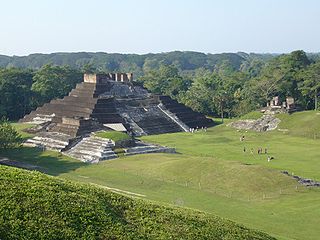
Tabasco, officially the Free and Sovereign State of Tabasco, is one of the 32 Federal Entities of Mexico. It is divided into 17 municipalities and its capital city is Villahermosa.

Villahermosa is the capital and largest city of the Mexican state of Tabasco, and serves as the municipal seat of the state. Located in Southeast Mexico, Villahermosa is an important city because of its cultural history, natural resources, commercial development, and modern industrialization.

Piedras Negras is a city and seat of the surrounding municipality of the same name in the Mexican state of Coahuila. It stands at the northeastern edge of Coahuila on the Mexico–United States border, across the Rio Grande from Eagle Pass in the U.S. state of Texas. In the 2015 census the city had a population of 163,595 inhabitants, while the metropolitan area had a population of 245,155 inhabitants. The Piedras Negras and the Eagle Pass areas are connected by the Eagle Pass–Piedras Negras International Bridge, Camino Real International Bridge, and the Union Pacific International Railroad Bridge.

Comalcalco is a city located in Comalcalco Municipality about 45 miles (60 km) northwest of Villahermosa in the Mexican state of Tabasco. Near the city is the Pre-Columbian Maya archaeological site of Comalcalco. The literal English translation of "Comalcalco" is "In the house of the comals". A comal is a pan used to prepare food.
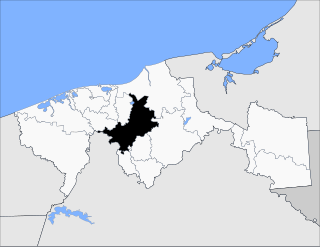
The Municipality of Centro is one of the 17 municipalities of the Mexican state of Tabasco. Its municipal seat is located in the city of Villahermosa. The municipality had a 2010 census population of 640,359 inhabitants, 353,577 (55.2%) of whom lived in its municipal seat, Villahermosa.

The 2007 Tabasco flood occurred in late October and early November 2007 in the Mexican states of Tabasco and Chiapas, in which as much as 80% of the former was left under water. At least 20,000 people were forced to seek emergency shelter. Over 1,000,000 residents were affected.
Manuel Sánchez Mármol was a Mexican writer, journalist, lawyer, politician, and a member of the Mexican Academy of Language.
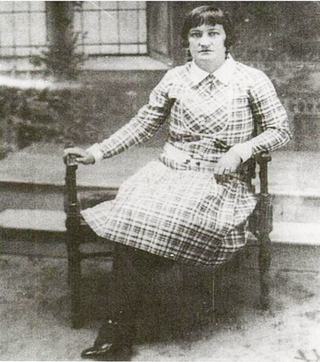
María del Rosario Gutiérrez Eskildsen was a Mexican lexicographer, linguist, educator, and poet who is remembered for her studies on the regional peculiarities of speech in her home state of Tabasco as well as for her pioneering work as a teacher and pedagogue in Tabasco and throughout Mexico. She has at times been described as Tabasco's first woman "professionist".
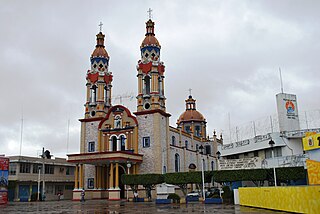
Paraíso is a town and municipality located in the north of the Mexican state of Tabasco, about 75 km due north of the state capital of Villahermosa on the Gulf of Mexico. Much of the area is traditionally dedicated to fishing and agriculture. Today, it is also an oil-producing area with the mostly oil-dedicated port of Dos Bocas. There is also some tourism connected to the area's beaches and natural attractions, and the area is promoted under the state's Cacao Route tourism program.
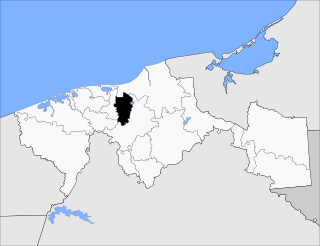
Nacajuca Municipality is a municipality in the Mexican state of Tabasco in south-eastern Mexico.

Teapa Municipality is a municipality in the Mexican state of Tabasco in south-eastern Mexico.

Jalpa de Méndez is a city in Jalpa de Méndez Municipality located in the north of the Mexican state of Tabasco, Mexico. It is considered part of the Chontal Maya region of the state, known for its production of decorated dried gourds traditionally used for drinking chocolate and cured meats. Although there is some oil production and tourism, its main economic activity is agriculture, producing cacao, coconut and livestock.
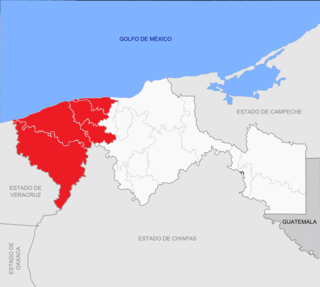
Chontalpa is a region in the northwest of the Mexican state of Tabasco, consisting of four municipalities. Although the name refers to the state's Chontal Maya population, modern Chontalpa is a subregion of the Grijalva Region, with boundaries defined by economic concerns. A large percentage of the state's Chontal Maya population does live in the region, with the municipality of Nacajuca having the largest concentration of Chontal Maya indigenous individuals, while the next largest concentration is found just east of the region, in the Villahermosa area. The Chontalpa economy is heavily dependent on agriculture, especially livestock, as well as on its oil industry. The reliance on these sectors has prompted conflict since the 20th century, as the environmental effects of the oil industry have caused concerns of effects on agriculture. Chontalpa is also home to Tabasco's two main archeological sites, La Venta and Comalcalco, along with numerous smaller sites.

Rodolfo Rincón Taracena was a Mexican journalist and crime reporter for Tabasco Hoy, a newspaper based in Villahermosa, Tabasco in southeastern Mexico. He was known for his direct reporting style, and wrote extensively about local drug trafficking and the growing presence of organized crime in his home state.
Andrea Gómez y Mendoza was a Mexican graphic artist and muralist, a member of the Salón de la Plástica Mexicana.
The following is a timeline of the history of the city of Ciudad Juárez, Chihuahua, Mexico.
Same-sex marriage has been legal in Tabasco since 27 October 2022. A bill to legalise same-sex marriage was passed by the Congress of Tabasco on 19 October 2022. It was signed by Governor Carlos Manuel Merino Campos, and published in the official state journal on 26 October, taking effect the next day. Tabasco was the fourth-to-last state in Mexico to legalize same-sex marriage.

Eduardo González Arévalo was a Spanish-born Imperial Mexican General during the Second French intervention in Mexico. He was known for being the Imperial Governor of Tabasco from June 18, 1863 to January 20, 1864 as well as being a major participant of the French intervention in Tabasco.

Paraíso is a municipality in Tabasco in south-eastern Mexico.
















